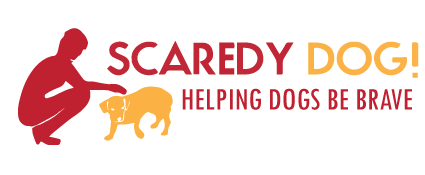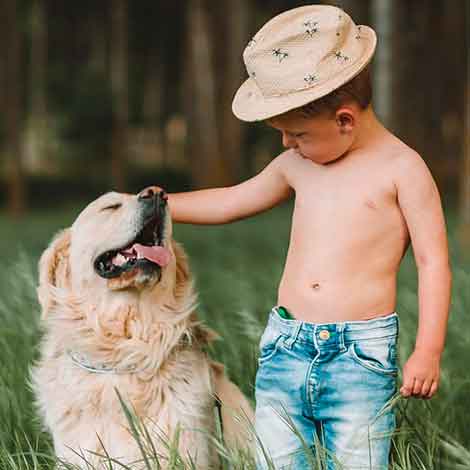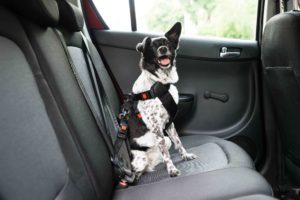Taking Your Scaredy Dog For A Car Ride
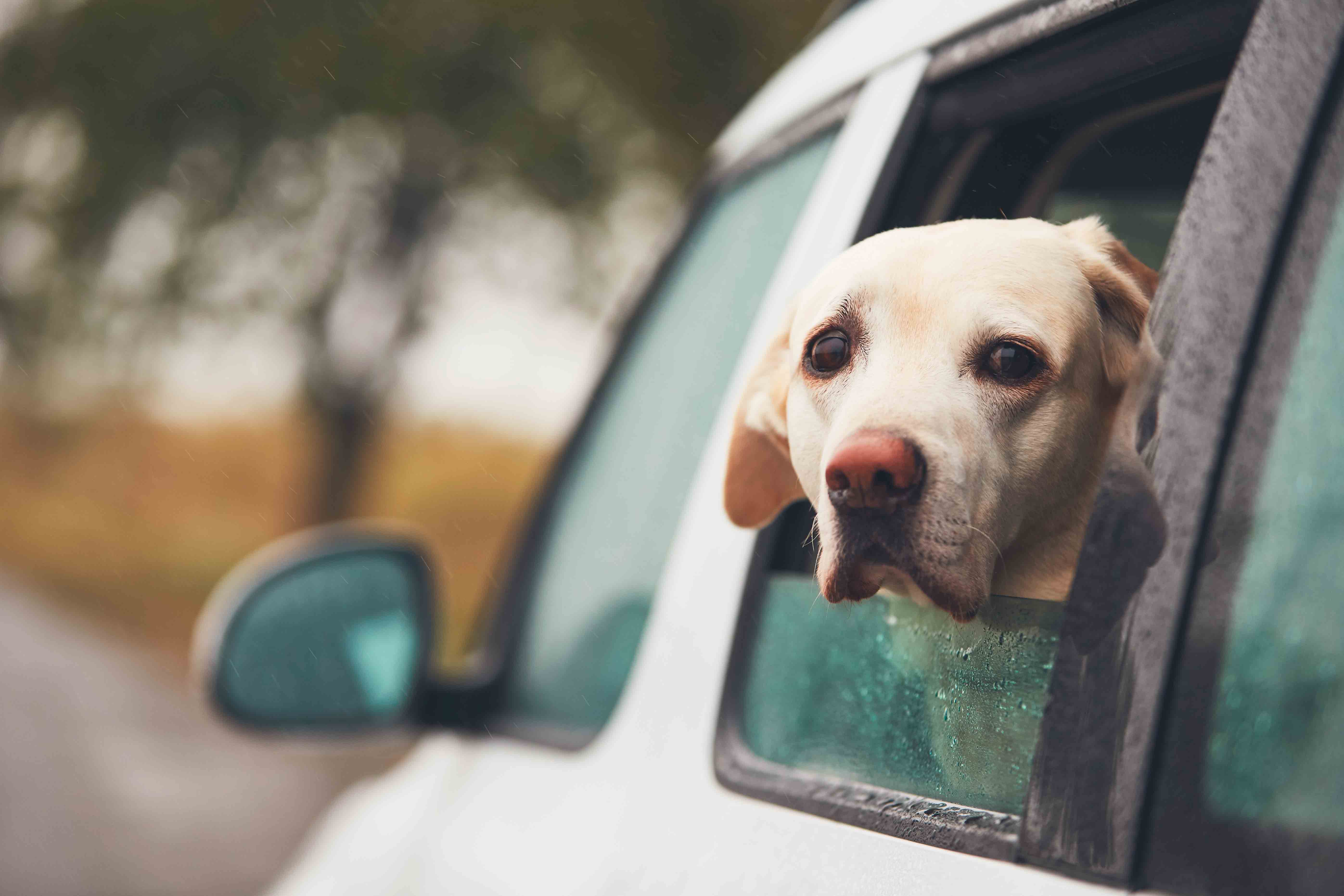
A car ride is often a source of anxiety for scaredy dogs. Training your dog to remain calm through car rides requires desensitization (exposing your dog to low levels of stress until your dog can remain calm, and then building up) and counter-conditioning (pairing potentially stress-inducing things to good things, like hotdog, cheese, and other high-value treats).
A lot of this guide depends on where your dog gets nervous. Start with FAS signs of 0-1 or 1 until your dog is calm with the first step before progressing. This may mean opening the car door, giving your dog a handful of high-value treats, closing the door, and going back in the house. If that’s when your dog starts getting nervous, that’s ok! Your scaredy dog sets the pace for any training you do. If you are unsure of anything in this guide, have trouble recognizing your dog’s signs of stress, or your dog fear-bites or lashes out, make sure to consult with a professional trainer or behaviorist.
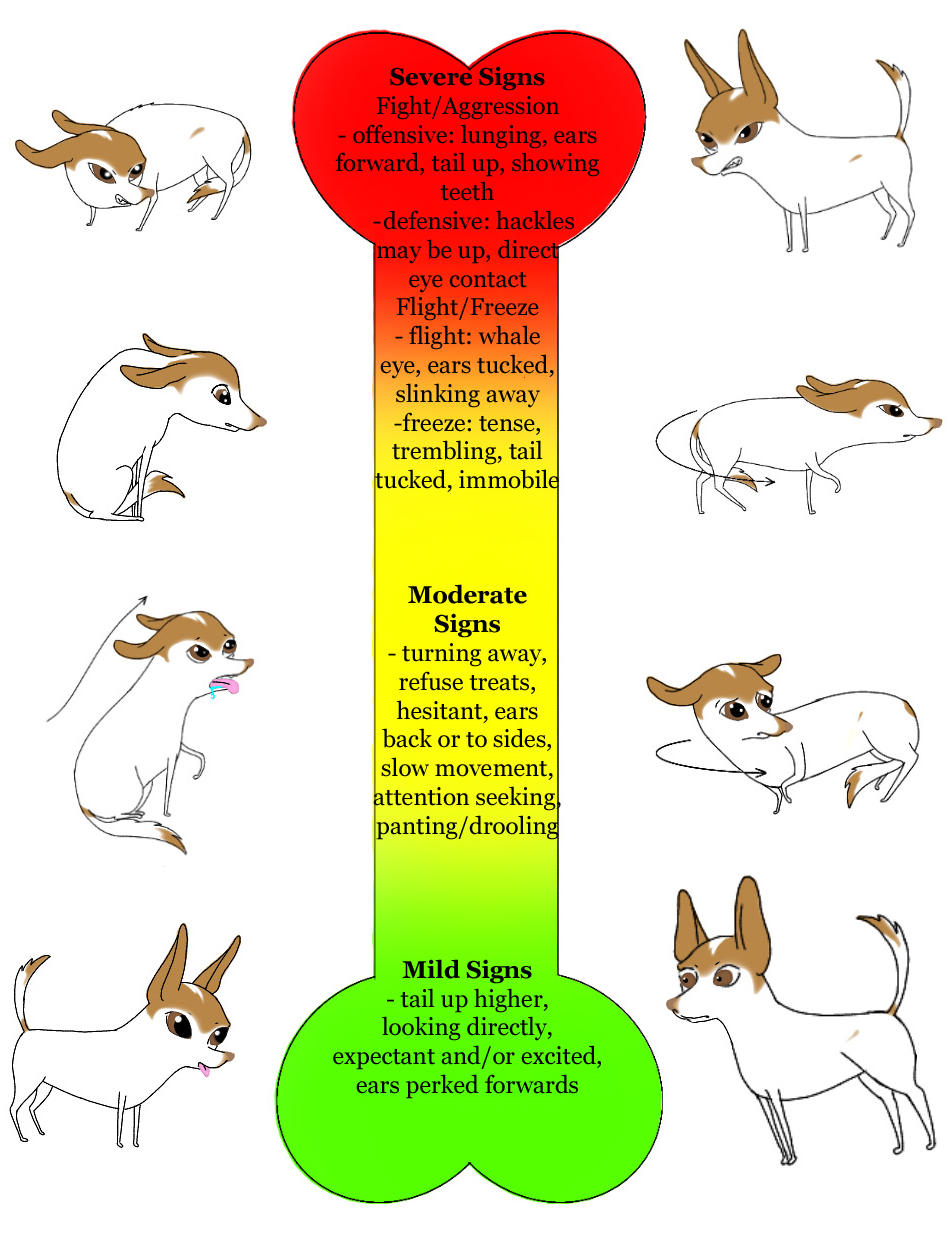
Getting in the car:
If your dog only gets in the car for a vet visit or other scary things, your dog may get nervous during car rides. Act like you’re going to take a ride but then change your mind, giving high value treats the whole time.
- Start by putting your shoes on, treat your dog, and take your shoes back off
- Put your shoes on, grab your keys, treat your dog, put your keys down, and take your shoes off
- Again, put your shoes on, grab your keys, leash your dog, treat your dog, unleash your dog, put your keys down, and take your shoes off
- Get your shoes on, grab your keys, leash your dog, get in the car with your dog, treat your dog, and go back in the house
- Finally, you’ll put your shoes on, grab your keys, leash your dog, get in the car with your dog, turn the car on, treat your dog, then turn the car off and go back in the house
Start with the beginning steps and build up very slowly. When your dog can remain calm through the step 1, begin step 2 until your dog can remain calm through that. If you see your dog start to get nervous (watch very carefully for the FAS1 beginning signs), stop training for the day and give your dog a break. Do the step you’re working on several times a day for several days to let your dog know getting in the car is nothing to be concerned about. See my guide to driving with scaredy dogs for more information.
Driving:
When your dog is ok with being in the car, you can begin driving with your dog. Always make sure your dog is always properly restrained while driving for safety. Your dog should have positive associations to the kennel or seat belt harness and should willingly go into his kennel or let you put his harness on. (This process is the same as introducing your dog any kind of equipment – see the below sections on nail trims and bathing.) Also, feeding your dog a little less* before a car ride may make your dog more interested in your treats, and will also help if your dog tends to get carsick.
Start by driving very slowly for short distances, and then going back home. When your dog remains calm, you can gradually increase the driving time and start taking him to fun places. Sometimes going for a ride means a walk in the park, or a trip to get doggie ice cream! Sometimes it means going to the vet’s parking lot, getting lots of high-value treats, and leaving again. Mix it up so your dog doesn’t know what to expect. When your dog can remain calm in the vet’s parking lot, go inside, have the receptionists give your dog high-value treats and praise if he’s still calm, and leave again. If your dog is dog- or leash-reactive, choose a time when the vet is quiet or call ahead of time to ask.
Management tips to help your dog during a car ride:
- Crate small dogs if possible and leash bigger dogs while driving for safety. Small crates are safest placed at the foot of the back seat. Put familiar bedding in the crate and it may help to drape a thin blanket over the crate. Make sure to leave a side open to the air.
- Play soft music, an audiobook, or a talk show to distract your dog from car noise
- Put a drop or lavender, chamomile, and/or calming pheromones in your car about 15 minutes before a car ride
- Dogs don’t get motion sick very often – if your dog often throws up in the car, it’s usually a sign of stress. Until your dog is fully trained to remain calm during car rides, you may choose to not feed your dog before leaving (if medically appropriate). You an also ask your vet for an antianxiety or anti-nausea pill for management purposes.
Do you want to keep up with our training guides?
For more helpful tips on handling your scaredy dog, please take a look at our Training Guides. We also have our FAQ page and you can also find Scaredy Dog on Facebook.
